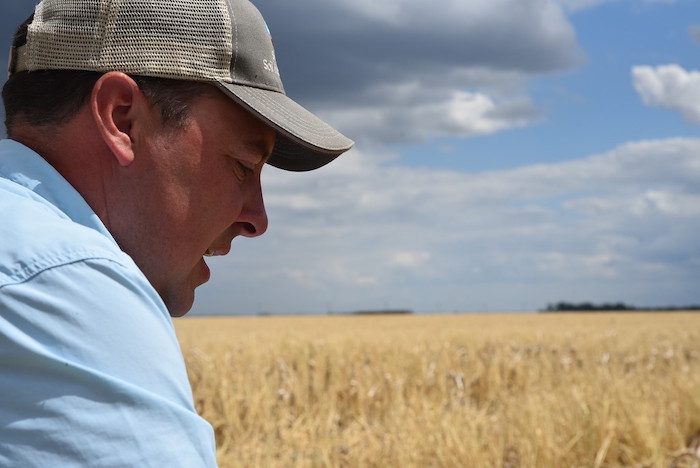The adaptable Johnsons of Frankfort, S.D. are trying new things all the time.
No-tillers Brian and Jamie Johnson aren’t afraid to stand out, and they’ve tried two approaches for things that could be available for the fall.
Together they have about 1,700 acres of cropland, 700 acres of pastures, 100 head of cow/calf pairs and 25 bred heifers. They have a dedicated corn-soybeans rotation, with fall cover crops in the mix as well.
Garden As Laboratory. Past implementations in the field have succeeded well enough to push into the kitchen garden, and vice versa.
Jamie started no-tilling potatoes in her garden. Growing up on a dairy farm in Knox County, Neb., she provides a fresh perspective to the family’s row crop operation. She is often the driving force behind the Johnsons' innovations and willingness to try new things.
“She is always asking questions and challenging me to do something different,” Brian says. “She always has ideas.”
Covers From Above. Jamie began experimenting with cereal rye as a cover crop in the family’s home garden. The success in the garden led them to try cover crops on their commercial acreage 15 years ago. The Johnsons still use rye and have added some cover crop mixtures.
Jamie Johnson suggested aerial seeding rye as a cover crop following corn 3 years ago. Each spring after planting soybeans, the Johnsons kill off the rye using glyphosate. They make sure to select soybean varieties that will tolerate the chemical’s presence.
Brian says the rye helps with soil health, improves water infiltration, reduces broadleaf weed pressure and provides a wintertime habitat for wildlife.
“The biggest regret I have is that we did not fly rye onto the whole farm in the fall of 2021 and left it off 20-30% of the acres,” Brian says. “I saved 10-15% an acre this year on herbicides in my no-till soybeans because I had rye growing in those fields. Last spring, we did not have any dust coming off our fields in April because the rye was 6 inches tall.”
 The Johnsons have employed aerially seeded cereal rye, after initially using it as a cover in the family garden.
The Johnsons have employed aerially seeded cereal rye, after initially using it as a cover in the family garden.




Post a comment
Report Abusive Comment